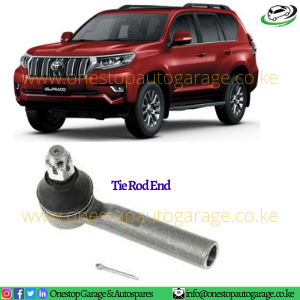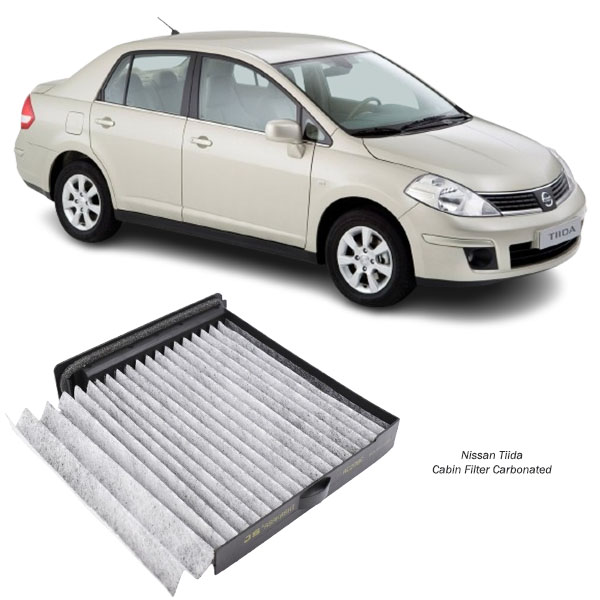-14%
Get Nissan Tiida Cabin Filter Assy (Carbonated) AC208C in Kenya
The Cabin Filter Assembly (Carbonated), also known as the Activated Carbon Cabin Air Filter, is a crucial component in a vehicle’s HVAC (Heating, Ventilation, and Air Conditioning) system. Unlike standard cabin filters, carbonated filters have an additional layer of activated charcoal that absorbs odors, harmful gases, and pollutants, improving air quality inside the vehicle.
🚗💨 Why is the Cabin Filter Important?
✔️ Filters dust, pollen, and airborne particles.
✔️ Eliminates bad odors and harmful gases.
✔️ Improves air circulation inside the vehicle.
✔️ Enhances HVAC system efficiency.
✔️ Protects passengers from allergens and pollutants.
💡 A high-quality cabin air filter ensures a healthier and more comfortable driving experience!
2. How Does a Carbonated Cabin Filter Work? 🔄
Multi-Layer Filtration Process:
1️⃣ Primary Layer (Particle Filter): Traps large particles like dust, pollen, and debris.
2️⃣ Activated Carbon Layer: Absorbs harmful gases (like carbon monoxide and nitrogen dioxide) and eliminates unpleasant odors.
3️⃣ Microfiber Layer: Captures smaller pollutants and allergens.
4️⃣ Support Layer: Reinforces the filter structure for durability.
🚗 Activated Carbon’s Role:
✔️ Removes unpleasant smells from exhaust fumes, smoke, and mold.
✔️ Neutralizes harmful airborne chemicals.
✔️ Prevents eye irritation, sneezing, and respiratory issues.
💡 A regular cabin filter only blocks dust, while a carbonated one actively purifies the air inside your car!
3. Types of Cabin Air Filters 🚘
There are different types of cabin air filters based on material and function.
1. Standard Paper Cabin Filter 📜
✔️ Made from pleated paper or synthetic fibers.
✔️ Filters dust, pollen, and debris.
✔️ Affordable but does not remove odors or gases.
2. Activated Carbon Cabin Filter (Carbonated) 🌫️
✔️ Contains activated charcoal for superior filtration.
✔️ Absorbs smoke, fumes, and toxic gases.
✔️ Provides fresher, cleaner air inside the cabin.
3. HEPA Cabin Filter 🏥
✔️ High-Efficiency Particulate Air (HEPA) technology.
✔️ Captures 99.97% of microscopic particles (as small as 0.3 microns).
✔️ Used in luxury and medical-grade vehicles.
💡 For the best balance of performance and affordability, activated carbon cabin filters are highly recommended!
4. Signs of a Dirty or Failing Cabin Air Filter 🚨
A clogged or old cabin filter can affect air quality and HVAC performance. Look out for these warning signs:
1. Bad Odors Inside the Car 🤢
❌ Moldy, musty, or smoky smells indicate trapped pollutants in the filter.
2. Weak Airflow from Vents 🌬️
❌ Reduced AC or heater performance means restricted air passage.
3. Increased Allergies or Respiratory Issues 🤧
❌ More dust and allergens can cause sneezing, coughing, or irritation.
4. Foggy Windows That Take Longer to Clear 🌫️
❌ Poor airflow affects defogging efficiency.
5. Noisy Blower Motor 🛠️
❌ Debris buildup makes the HVAC system work harder.
🚨 Ignoring a dirty cabin filter can lead to poor air quality, inefficient HVAC performance, and higher fuel consumption.
5. When Should You Replace a Cabin Filter? 🔄
The replacement frequency depends on driving conditions and climate.
General Recommendations:
✔️ Normal driving conditions: Every 15,000 – 25,000 km or once a year.
✔️ Dusty or urban areas: Every 10,000 – 15,000 km.
✔️ Severe conditions (heavy pollution, off-road): Every 8,000 – 12,000 km.
💡 Check your owner’s manual for specific recommendations for your vehicle!
6. How to Check & Replace a Cabin Air Filter (DIY Guide) 🔧
Replacing a cabin air filter is one of the easiest car maintenance tasks!
Tools Needed 🛠️
✔️ New activated carbon cabin filter.
✔️ Screwdriver (if necessary).
✔️ Clean cloth or vacuum (to remove dust).
Step-by-Step Guide 🏗️
1️⃣ Locate the Cabin Filter Housing – Typically behind the glove box or under the dashboard.
2️⃣ Remove the Glove Box (if required) – Some cars require removing screws or clips.
3️⃣ Take Out the Old Filter – Check for dirt, debris, or clogging.
4️⃣ Clean the Housing Area – Wipe with a cloth or vacuum the dust.
5️⃣ Insert the New Cabin Filter – Ensure it is correctly aligned (check airflow direction).
6️⃣ Reassemble Everything – Secure the glove box or filter cover.
🚗 Pro Tip: Mark the date/mileage when you replace the filter for easy tracking!
9. Benefits of Using an Activated Carbon Cabin Filter 🌟
✅ Improves Air Quality – Removes dust, smoke, and allergens.
✅ Eliminates Unpleasant Odors – Absorbs smoke, fumes, and mold.
✅ Enhances HVAC System Performance – Ensures proper airflow.
✅ Protects Passengers’ Health – Reduces respiratory irritation.
✅ Extends AC System Life – Prevents dust buildup inside vents.
🚗 Verdict: A carbonated cabin filter is a small investment that makes a BIG difference in driving comfort and health! 🔥💯
10. Final Thoughts: Is a Carbonated Cabin Filter Worth It? 🎯
Absolutely! Investing in a high-quality activated carbon cabin air filter ensures a clean, fresh, and pollutant-free cabin environment.
🔹 Recommended for:
✔️ City drivers exposed to pollution 🚦.
✔️ Allergy sufferers 🤧.
✔️ Smokers or those driving in high-traffic areas 🚗💨.
✔️ Anyone wanting a fresh-smelling car 🌸
Follow us on Facebook for more parts.



